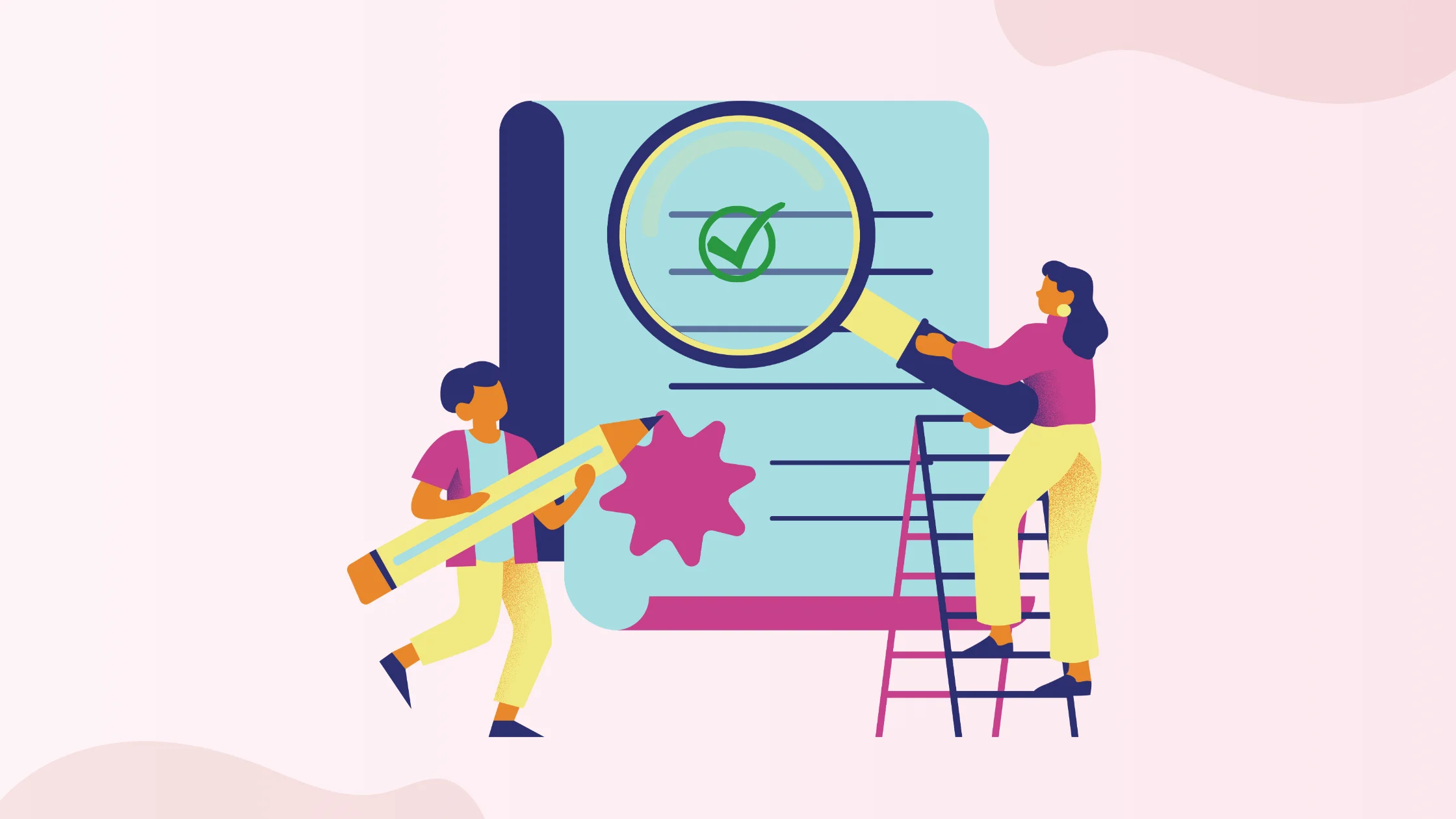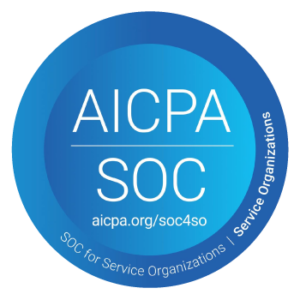As businesses rely more on technology and software, the importance of having a Service Level Agreement (SLA) in place has become paramount.
Service Level Agreements (SLAs) are a crucial part of any business relationship between a client and a service provider. They define the level of service that the client can expect from the provider and are the basis for building and delivering IT services. A well-crafted SLA can help align the expectations of both parties, improve communication, and ensure that the service provider is meeting the needs of the client.
It define the metrics that will be used to measure the quality of service, as well as the remedies that will be applied if the service falls below the agreed-upon standards.
Whether you’re a service provider looking to improve your relationships with clients, or a client seeking to ensure that your needs are being met, this guide will provide you with the knowledge and tools you need to create effective SLAs.
What is a Service-Level Agreement (SLA)?
A Service Level Agreement (SLA) is a contractual agreement between a service provider and a customer. SLAs are commonly used in customer support to set expectations for how quickly a customer can expect a response or resolution to their issue.
SLAs typically include specific metrics that will be used to measure the quality of the service being provided. Some of the metrics that could be included are response time, resolution time, or uptime guarantees. By defining these metrics upfront, both the service provider and the customer can be clear about what is expected and how success will be measured.
One of the key benefits of an SLA is that it helps to ensure that everyone is on the same page. By setting clear expectations for both the service provider and the customer, SLAs can help to reduce misunderstandings and improve communication.
In addition, SLAs can also help to ensure that the service provider is delivering the level of service that the customer expects.
Why are Service Level Agreements important?
Service Level Agreements (SLAs) are crucial for both the client and the service provider. These agreements establish a clear understanding of the services being provided, the expected level of service, and the metrics used to measure the service.
Service Level Agreements are important for several reasons:
Clear expectations: An SLA provides a clear understanding of what services will be provided, how they will be provided, and what the expectations are for both parties. By outlining the level of service that will be delivered and the metrics that will be used to measure that service, SLAs ensure that both parties have a clear understanding of what is expected. This can help to avoid potential misunderstandings and conflicts in the future .
Providing a framework for service delivery: SLAs provide a framework for service delivery, ensuring that service providers deliver services consistently and reliably. If a dispute arises between the service provider and the client, the SLA provides a framework for resolving that dispute. By defining the remedies that will be applied if the service falls below the agreed-upon standards, the SLA helps to ensure that disputes are resolved fairly and efficiently.
Improved quality of service: By setting clear standards for the level of service that will be delivered, SLAs help to improve the quality of service. When service providers know that they will be held accountable for meeting specific metrics, they are more likely to deliver high-quality service.
Accountability: An SLA helps to hold both parties accountable for their responsibilities. It outlines the consequences of not meeting the agreed-upon service levels and can help to ensure that both parties are working towards the same goal.
Risk mitigation: An SLA can help to mitigate risks for both parties. By clearly outlining the responsibilities and expectations of both parties, it can help to prevent potential issues from arising.
Who needs an SLA and why?
Service Level Agreements (SLAs) are essential for any organization that relies on services from vendors or service providers. These agreements help establish clear expectations and define the level of service that a customer can expect from a vendor.
Typically, businesses or organizations that rely on technology or other types of services to operate their business will require an SLA.
This is because downtime or disruptions to these services can have a significant impact on the business’s operations, productivity, and profitability.
For example, a company that relies on a cloud-based software application to manage their customer data may require an SLA that guarantees a certain level of uptime for that application. If the application experiences downtime that exceeds the agreed-upon service level, the company may be entitled to compensation or other remedies as outlined in the SLA.
In general, any business or organization that relies on external services to operate should consider implementing an SLA to ensure that their needs are being met and to provide recourse in the event of service disruptions or other issues.
What are key components of an SLA?
Key components of a service-level agreement include the following below.
1. Service Description
This section of the SLA outlines the services that the service provider will provide to the client. It should be written in clear, concise language that is easy for the client to understand. The service description should include details such as the scope of the service, the expected resolution time, and the expected level of service.
2. Service Level Objectives (SLOs)
Service Level Objectives (SLOs) define the level of service that the provider will deliver to the client. It is important to ensure that the SLOs are aligned with the client’s business objectives and expectations. SLOs can include uptime, response time, resolution time, and other factors that are relevant to the service being provided.
3. Performance Metrics
Performance metrics are the key performance indicators (KPIs) used to measure the service provider’s performance against the SLOs. These metrics should be objective, quantifiable, and relevant to the service being provided. The performance metrics should be regularly monitored and reported to the client.
4. Roles and Responsibilities
This section of the SLA outlines the roles and responsibilities of both the service provider and the client. It should clearly define the responsibilities of each party and the specific tasks that each party is responsible for. This section is essential to ensure that both parties understand their responsibilities and can hold each other accountable.
5. Communication
Communication is critical to the success of any service agreement. This section of the SLA outlines the communication channels that will be used to communicate between the service provider and the client. It should include details such as the frequency of communication, the mode of communication, and the escalation process in case of a communication breakdown.
6. Service Availability
Service availability defines the hours of operation, including any specific hours or days that are excluded. The availability of services is important to ensure that businesses can access critical systems when they need them.
7. Response Time and Resolution Time
The response time defines the time frame in which the service provider will respond to the customer’s request and the resolution time defines the duration within which the service provider addresses and resolves the customer’s request. To know more about improving customer response time, read our blog on 8 ways to improve customer response time.
8. Service Credits
Service credits are financial penalties that are imposed on the service provider in case of a breach of the SLA. This section of the SLA should outline the service credits that will be imposed in case of a breach and the process for calculating the credits.
9. Termination Clause
The termination clause outlines the circumstances under which either party can terminate the agreement. This section of the SLA should outline the notice period required for termination and the process for terminating the agreement.
What are the three types of SLA?
Service Level Agreements (SLAs) can take on different forms depending on the parties involved and the type of services being provided. In this section, we will explore the different types of SLAs that exist.
There are several types of Service Level Agreements, including:
1. Customer Service Level Agreement
Customer-based SLAs are agreements that are tailored to the specific needs of individual clients. They typically include customized metrics and service level objectives that are designed. These agreements define the level of service that the service provider is expected to provide to the customer. The purpose of these agreements is to ensure that the customer receives the service they require, and the service provider is held accountable for providing that service.
External SLAs can cover a wide range of services such as IT services, customer support services, and logistics services. This type of SLA is an agreement between a service provider and a specific customer. It outlines the services that will be provided to the customer, as well as the level of service the customer can expect to receive.
2. Internal Service Level Agreements
Internal Service Level Agreements are agreements between different departments or teams within an organization. These agreements define the level of service that each department is expected to provide to the other departments. The purpose of these agreements is to ensure that all departments are aligned and working towards the same goals. Internal SLAs can cover a wide range of services such as IT support, HR services, and more.
3. Multi-level SLAs
Multi-level SLAs are agreements that establish different levels of service for different clients. They may include different metrics and service level objectives for each level of service. The purpose of these agreements is to ensure that all parties are aligned and working towards the same goals. Multi-level SLAs can cover a wide range of services such as IT services, logistics services, and supply chain services. Multi-level SLAs can be complex, and it is important to have clear communication channels and well-defined roles and responsibilities to ensure that the SLA is effective.
What are the benefits of having a SLA?
Having a Service Level Agreement (SLA) in place can bring many benefits to both the service provider and the customer. Here are some of the main advantages:
Clarity and Understanding: SLAs provide clear and specific expectations for both the service provider and the customer, ensuring that everyone understands their roles and responsibilities.
Improved Communication: SLAs establish communication channels between the service provider and the customer, enabling them to communicate more effectively and quickly when issues arise.
Increased Accountability: SLAs hold service providers accountable for the level of service they provide, which helps ensure that they will prioritize their customers’ needs and deliver high-quality service.
Better Performance: SLAs define measurable service levels and provide incentives for the service provider to meet or exceed them, leading to improved performance and service quality.
Customer Satisfaction: By clearly outlining the service levels that will be provided, SLAs can help to manage customer expectations and improve overall satisfaction with the service.
Reduced risk: SLAs can help to reduce the risk of service disruptions or other issues. By setting clear expectations and establishing a framework for resolving issues, both the service provider and the customer can feel more secure in their relationship.
Overall, having a well-crafted SLA in place can bring many benefits to both the service provider and the customer. By setting clear expectations, improving communication, and increasing accountability, SLAs can help to build stronger, more productive relationships between service providers and their customers.
Customer Support SLA Best Practices
When it comes to creating a Service Level Agreement (SLA), there are certain best practices that should be followed to ensure that both the client and the service provider are on the same page.
Here are some of the best practices for creating an effective SLA:
1. Define clear and measurable metrics: Make sure your SLA policies are easy to understand and that your customers know what to expect. Clearly communicate your response times, escalation procedures, and any other important details.
2. Set realistic targets: It is important to set realistic targets that are achievable, yet challenging. Setting unrealistic targets can lead to frustration and dissatisfaction on both sides.
3. Track and measure: Use a helpdesk system to monitor your SLAs and measure your performance. This will help you identify areas for improvement and ensure that you are meeting your targets.
4. Provide transparency: Be transparent about your SLA metrics and share them with your customers. This will help build trust and confidence in your service.
5. Offer flexibility: Be flexible with your SLAs and tailor them to meet the specific needs of your customers. This will help you provide a more personalized service and improve customer satisfaction.
6. Involve your team: Involve your support team in the development of your SLA policies. This will help ensure that everyone is on the same page and that your policies are realistic and achievable.
7. Continuously improve: Regularly review and update your SLA policies to ensure that they remain relevant and effective. Solicit feedback from your customers and your team to identify areas for improvement.
Overall, following these best practices can help to ensure that the SLA is effective in aligning the goals of the client and the service provider, and in ensuring that both parties are satisfied with the level of service being provided.
Examples of SLAs
In this section, we will discuss some examples of SLAs that you may encounter in your business. Here are some examples of SLAs.
Google Workspace SLA
Google Workspace is a cloud-based productivity suite that includes Gmail, Google Drive, Google Docs, and other applications. The Google Workspace SLA guarantees a 99.9% uptime for the core services.
If the uptime falls below 99.9%, customers will receive service credits in accordance with the agreement.
Microsoft Azure SLA
Microsoft Azure is a cloud computing platform that offers an array of services, including virtual machines, databases, analytics and more. The Microsoft Azure SLA guarantees a 99.9% uptime for all services that have two or more instances deployed in different availability zones.
If the uptime falls below 99.9%, customers can request service credits in accordance with the agreement.
Amazon Web Services SLA
Amazon Web Services (AWS) is a cloud computing platform that offers a wide range of services, including compute, storage, and databases. The AWS SLA guarantees a 99.99% uptime for all services, except for those that are in the Free Tier.
If the uptime falls below 99.99%, customers can request a credit equal to 10% of their monthly bill for each hour of downtime.
These are just a few examples of SLAs. The specific terms and conditions of an SLA will vary depending on the type of service being provided and the needs of the customer.
How does Desk365 enable you to manage SLAs in customer service?
One of the easiest ways to monitor your SLAs is to use an helpdesk software like Desk365. Most helpdesk software comes with built-in SLA management features that allow you to set and track your SLA goals.
Before you can start monitoring your SLAs, you need to set your goals. Determine your response and resolution times based on your business needs and customer expectations.
Once you have set your goals, configure your SLA settings in your support software. This includes setting up your SLA policies, defining your escalation rules, and setting up your notifications.
One of the ways help desks enable you to manage SLAs is by automatically notifying team members when a ticket is about to breach an SLA. This allows someone to jump in and make sure the customer gets the answer they need, ensuring that you are meeting your SLA commitments.
Another way Desk365 enable you to manage SLAs is by providing real-time reporting and analytics. You can monitor your SLA metrics and track performance against your service level targets. This allows you to identify areas where you may need to improve and make data-driven decisions to optimize your customer support operations.
We also enable you to manage SLAs by allowing you to define different service levels for different types of customers or tickets. For example, you may have different SLA targets for high-priority tickets or for customers with a higher level of support. This allows you to provide a more personalized and tailored support experience for your customers.
How to Create an SLA Policy in Desk365?
It is simple to create an SLA policy in Desk365. Once an SLA policy is created, it is automatically applied to relevant tickets. These are the steps to follow:
1. Go to Settings > Productivity > SLAs tab. Click on the ‘Add SLA’ button located at the top.
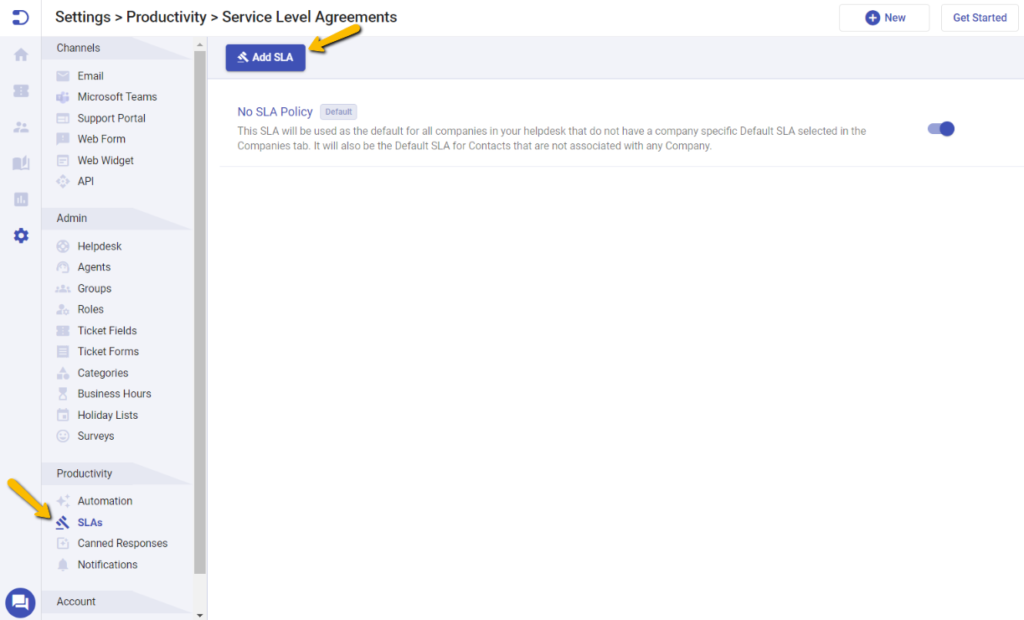
2. Enter a name for the policy and specify the response time and resolved time, as per your requirements. Once you have entered this information, click on the ‘Save’ button to create the SLA policy in your helpdesk.
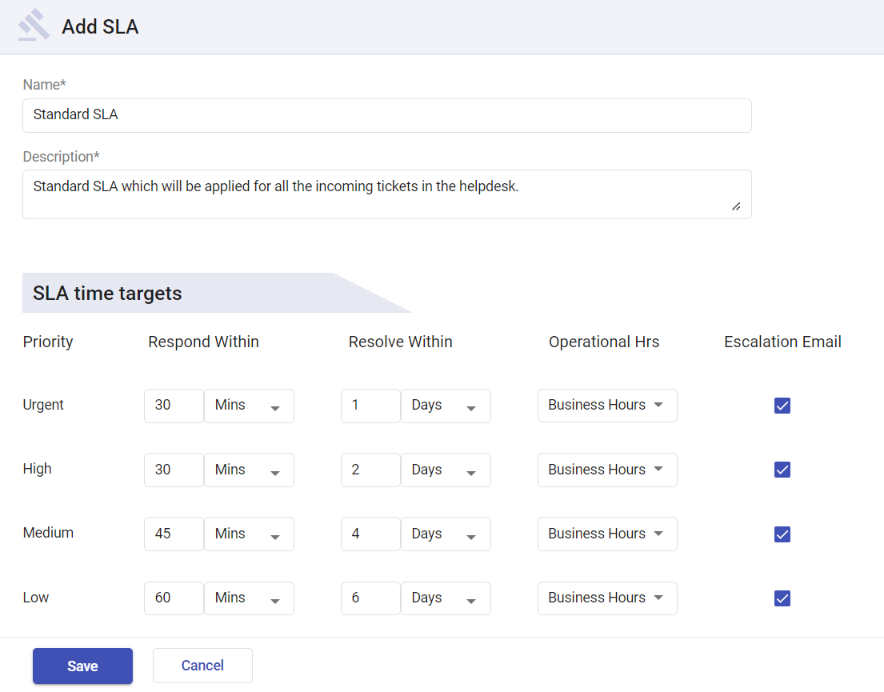
3. To address SLA breaches, you may consider sending reminders to your support agents and utilizing escalation rules to notify managers.
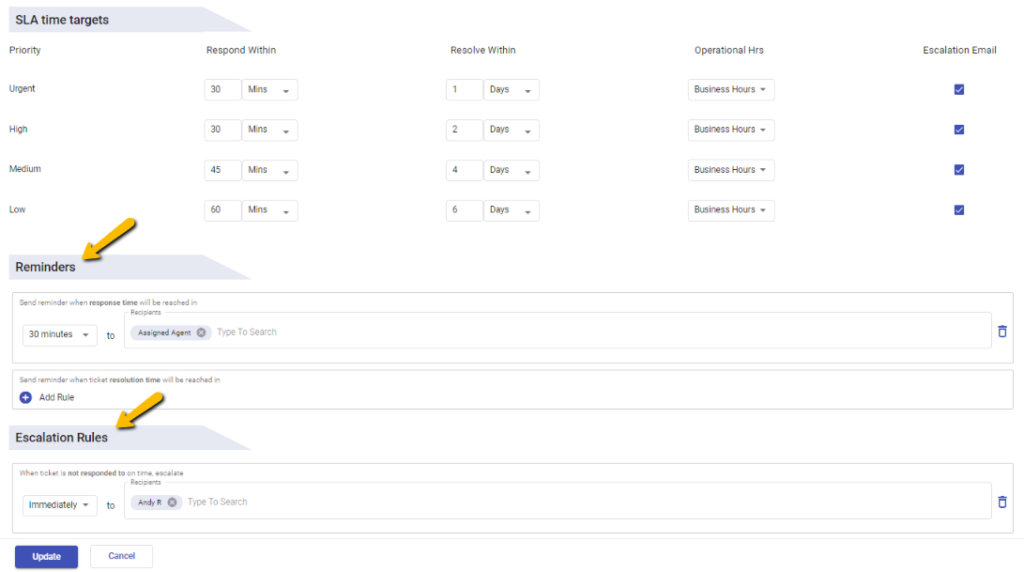
4. If you want this SLA policy to be applied to all incoming tickets in your helpdesk, you can set it as the ‘Default’ policy.
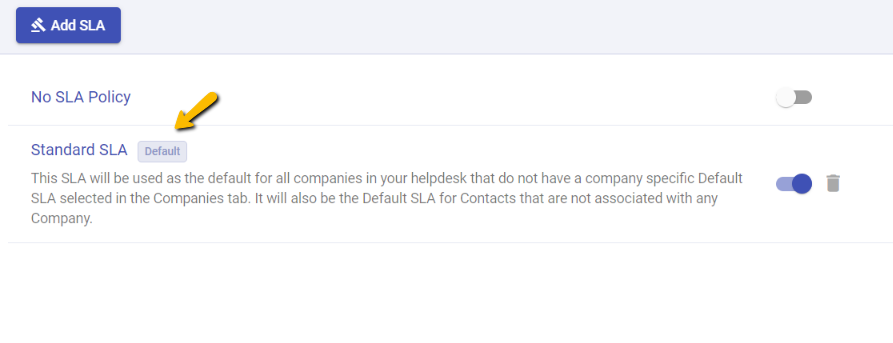
This article covers in detail how to configure SLAs and apply them to tickets in Desk365.
Conclusion
In conclusion, Service Level Agreements (SLAs) are a crucial component of IT service management.
Creating an effective SLA requires careful planning and consideration of the needs of both the client and the service provider. It is important to establish clear and measurable objectives, define the scope of the agreement, and set realistic expectations. Communication and collaboration between the client and the service provider are also critical to the success of the SLA.
By following the best practices outlined in this guide, organizations can create SLAs that align with their strategic priorities, improve service delivery capabilities, and enhance customer satisfaction.

